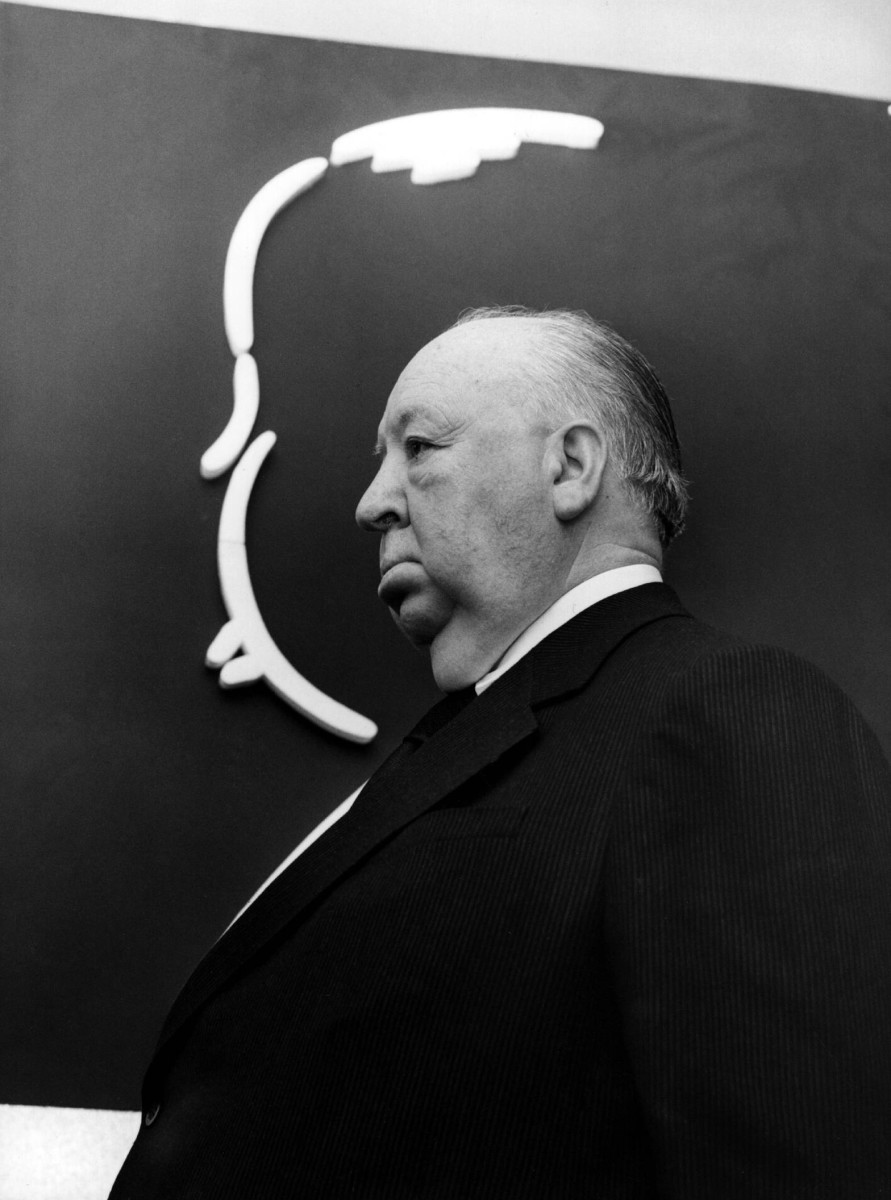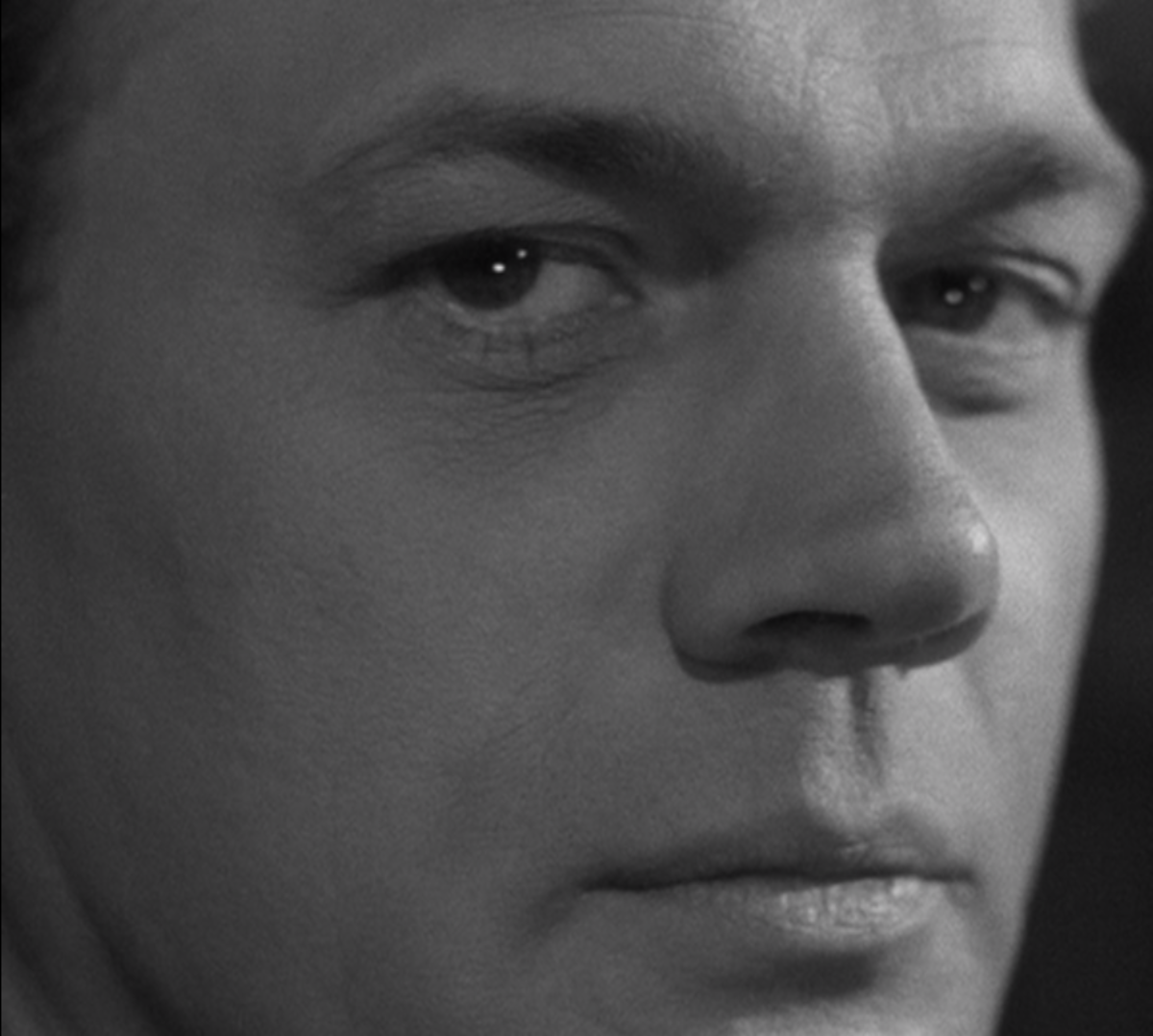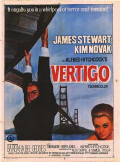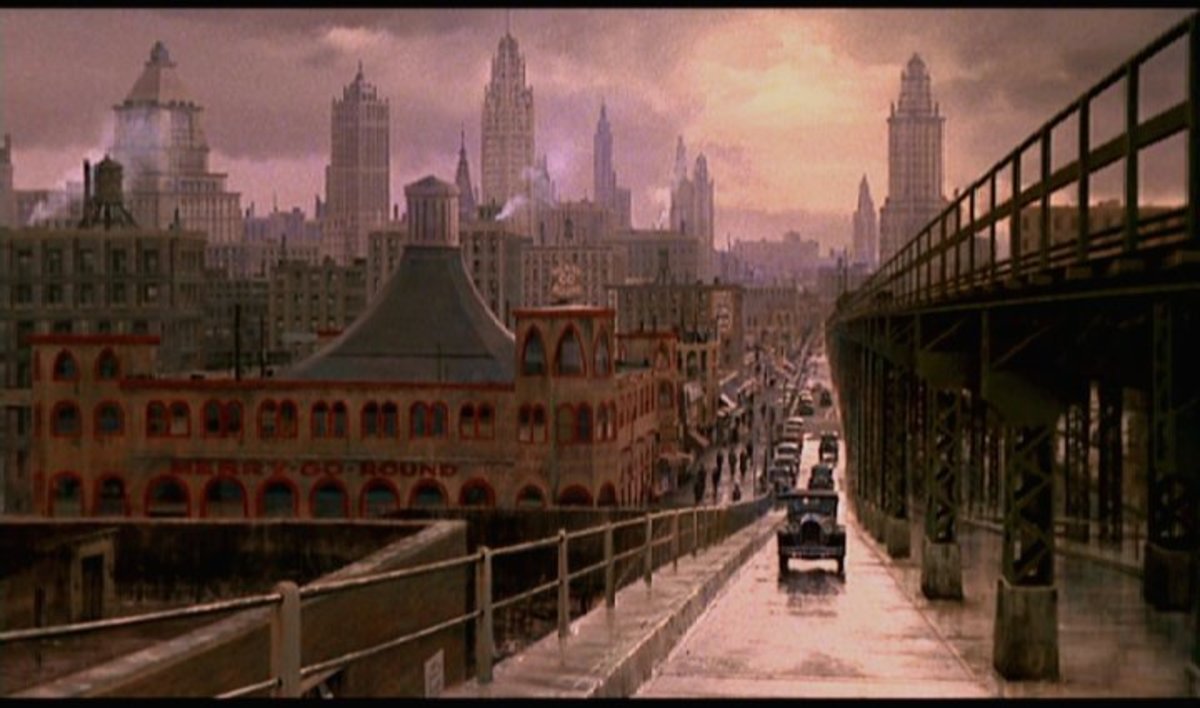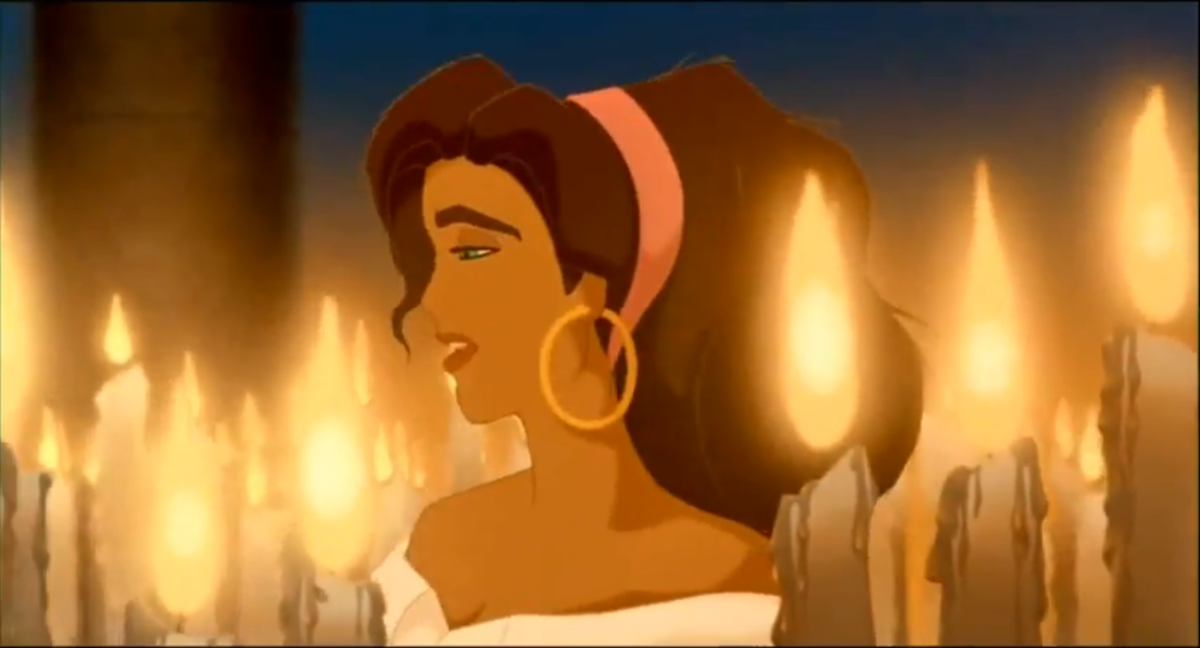An Alfred Hitchcock Primer: 10 Classic Movies
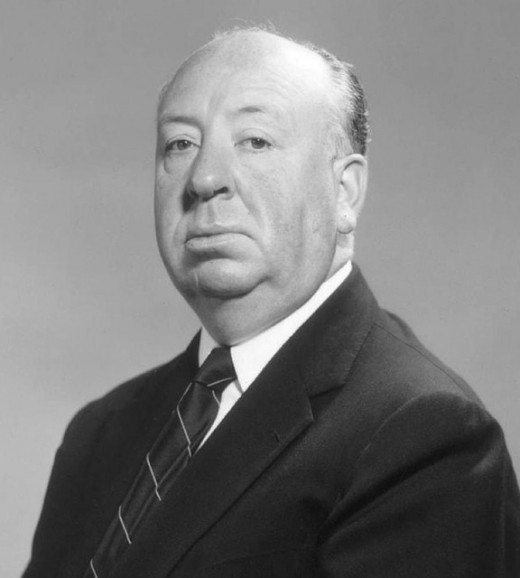
Introduction
Many consider Alfred Hitchcock to be the Master of Suspense as well as one of the (if not the) greatest directors of all time. Hitchcock revolutionized cinema; helped make Cary Grant, Grace Kelly, and Ingrid Bergman mega-stars; and his influence is felt to this day when a visually sumptuous or an elaborately-plotted film is deemed "Hitchcockian". William Friedkin, the director of The Exorcist and The French Connection, advises aspiring directors and film students to simply watch Hitchcock if they want to learn the craft. But which Hitchcock films are essential viewing? This list gives the plot of ten of his essential classics in a sentence; explains why they are considered classics; describes his most iconic scenes; and lists his cameos in each.
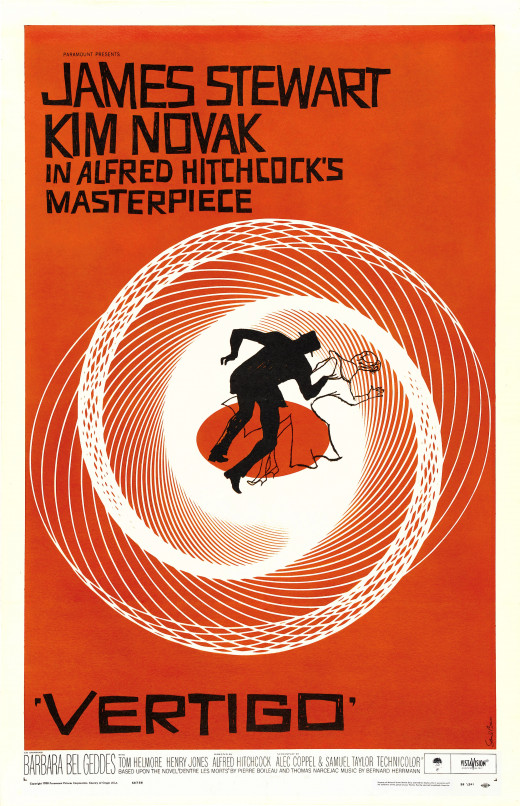
William Friedkin on Hitchcock and Vertigo
Vertigo
- The plot in a sentence: Former detective Scottie Ferguson attempts to keep his client’s wife from killing herself, falls in love, and loses her due to a severe case of vertigo; a year later, Scottie discovers a woman who bears a striking resemblance to the one he failed to save.
- Why it’s a classic: Despite being an initial critical and commercial failure, many consider Vertigo to be Hitchcock’s most personal film and his masterpiece. One could spend hours/days/years analyzing and psychoanalyzing every frame, every plot point, and every line of dialogue, looking for meaning and finding “clues” into the inner-workings of Alfred Hitchcock’s complex mind. One of the main themes includes Stewart trying to recreate a woman (by altering her dress, hair color, etc.) into the woman he failed to save, much in the way that Hitchcock attempted to turn his actresses into his ideal of the perfect woman. Jimmy Stewart gives one of his darkest performances-- if for no other reason that his character often fails more than succeeds throughout the running time of the film. Stewart’s Scottie is manipulated by just about every other character in the movie, is rendered useless by his own fear, and allows the woman he loves to die… TWICE. If Vertigo serves as a gateway into Hitchcock’s brain, there’s certainly plenty to see there. Vertigo ranks #9 on the American Film Institute’s 100 Greatest Films of All Time. The British Film Institute ranks Vertigo as the #1 greatest film ever made. Yes, #1.
- Most Iconic Scene: Stewart’s vertigo kicks in as he looks down a flight of stairs. The camera simultaneously zooms in and out (a dolly zoom), an effect which Hitchcock popularized until-- like all cool things-- it became overused and cliché.
- Hitchcock Cameo: Hitch walks by, carrying a trumpet case, about eleven minutes into the film.
Trailer for Vertigo
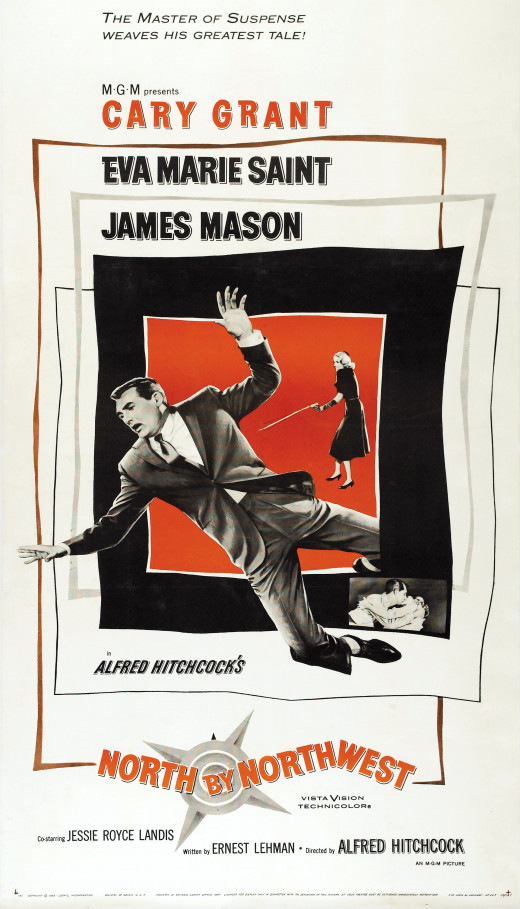
North by Northwest
- The plot in a sentence: Roger Thornhill, debonair ad man, finds himself embroiled in a case of mistaken identity, involving a Cold War plot and a microfilm of government secrets.
- Why it’s a classic: I’d describe North by Northwest as Hitchcock’s most accessible film. Screenwriter Ernest Lehman has been quoted as saying that he wanted to write “a Hitchcock picture to end all Hitchcock pictures”, and North by Northwest might be just that, or an admirable attempt at the very least. Cary Grant’s roguish charm oozes off the screen; James Mason and Martin Landau lend the villains a touch of class; Eva Marie Saint looks stunning; and the film offer plenty of twists, action, humor, and Hitchcock’s renowned suspense at its finest. It also boasts two of Hitch’s signature scenes, not to mention plenty of iconic Americana from Grand Central Station, Midwest cornfields, and Mount Rushmore. It’s ridiculously entertaining and the closest thing to a Bond film that Hitchcock ever made. North By Northwest ranks #55 on AFI’s 100 Greatest Films of All Time.
- Most Iconic Scene: It’s a tie between Cary Grant getting buzzed by a crop duster in a cornfield and Grant dangling from the face (literally) of Mount Rushmore.
- Hitchcock Cameo: Hitch misses the bus in the opening credits sequence.
Trailer for North by Northwest
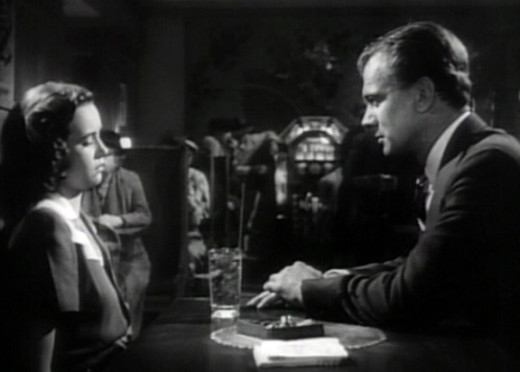
Shadow of a Doubt
- The plot in a sentence: When young Charlie’s namesake, Uncle Charlie, comes into town, she couldn’t be happier... until she discovers that good ol’ Uncle Charlie may be a serial killer known as the “Merry Widow Killer”.
- Why it’s a classic: Shadow of a Doubt shows its viewers that evil lurks everywhere, even in the smallest, sweetest towns and within the hearts of those whom you love most. As Uncle Charlie a.k.a. the Merry Widow Killer, Joseph Cotten can make himself menacing and charming at will, and although the viewer knows his awful truth early in the film, the audience understands why young Charlie admires him so much. Hitchcock gives the setting of Santa Rosa, California the feel of small-town Americana, a close-knit community where the traffic cop smiles at you as you pass; where most people leave their doors unlocked; where people trust one another until you give them a reason not to; i.e. the perfect place for the Merry Widow Killer to hide in plain sight. As young Charlie begins to suspect her perfect uncle might not be so perfect, the suspense builds to a fever pitch, and Hitchcock layers his small town fantasy with an undercurrent of savage darkness.
- Most Iconic Scene: Joseph Cotten gives a chilling speech during dinner about “horrible, faded, fat, greedy women.” Teresa Wright (young Charlie) protests, “They’re human beings!” To which Uncle Charlie replies, coldly, “Are they?
- Hitchcock Cameo: Hitch plays cards on a train.
Trailer for Shadow of a Doubt
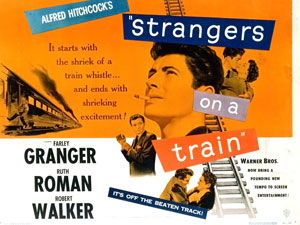
Strangers on a Train
- The plot in a sentence: Guy Haines, a tennis pro who hates his wife, meets Bruno, a pushy, overbearing man who hates his father, and Bruno suggests the two “criss-cross” or trade murders.
- Why it’s a classic: Robert Walker gives an excellent performance as Bruno who proves cold, calculating, intimidating, and homoerotic in turns. Patricia Highsmith wrote the novel Strangers on a Train as well as another story of a sexually-complicated psychopath, The Talented Mr. Ripley which has also been adapted to film. Often considered one of Hitchcock’s best villains, some viewers find Bruno more sympathetic than the hero of the film, Guy Haines. Perhaps Walker called upon some of his real-life demons, having suffered a nervous breakdown prior to filming Strangers, as he portrayed this complex and tortured character to perfection. Also, the depth of Bruno’s character may be thanks to Highsmith’s source material. In any case, Strangers on a Train draws on one of Hitchcock’s classic themes: being blamed for a crime for which one is innocent. The two lead characters work well as foils of the other, and the climax on an out-of-control carousel is one of Hitchcock’s best. This movie also inspired the Danny Devito/Billy Crystal comedy Throw Momma from the Train.
- Most Iconic Scene: During a tennis match, everyone’s heads in the crowd move back-and-forth as they follow the path of the ball. All except one. Bruno’s head stays stationary as he creepily stares down Guy Haines.
- Hitchcock Cameo: Hitch is getting on a train, carrying a double bass.
Trailer for Strangers on a Train
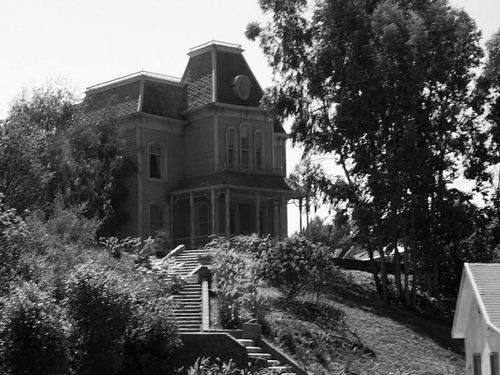
Psycho
- The plot in a sentence: The voluptuous Marion Crane steals money, holes up in a hotel run by psychotic Mama’s Boy Norman Bates, and disappears; so her friends hire a private detective to find her.
- Why it’s a classic: Psycho shouldn’t work. The film starts like a seedy noir with a Double Indemnity feel, and then Hitchcock pulls the rug from under his audience when the lead character dies halfway through the film. Before Psycho, this kind of bold move was unheard of in Hollywood. Then the film somehow seduces viewers into hoping that the murderer (or at least the guy covering up the murders) away with it. Again, at this time in history, Hollywood was not in the business of making audiences root for the bad guy. Just when viewers settle comfortably into the new turn the film has made, Hitchcock gleefully pulls the rug out from under everyone AGAIN when he reveals the greatest cross-dressing twist in movie history. No other director, past or present, could manage so many outrageous twists and turns and tonal shifts as masterfully as Hitchcock does in Psycho. You can almost imagine him giggling behind the camera as he does. Psycho ranks #14 on AFI’s 100 Greatest Films of All Time and #35 on the BFI’s top 50 Greatest Films of All Time.
- Most Iconic Scene: In the infamous shower scene, Marion Crane meets her untimely demise at the hands of Mother and her butcher knife. Many consider this scene to be one of the best edited of all time. Mother’s knife never actually slices skin on camera, but the viewer still feels a sense of incredibly brutal violence.
- Hitchcock Cameo: Hitch passes the window of Marion Crane’s office. He is wearing a cowboy hat.
Trailer for Psycho
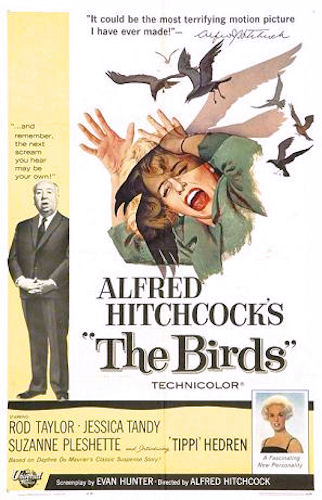
The Birds
- The plot in a sentence: Inexplicably, birds begin attacking the residents of Bodega Bay.
- Why it’s a classic: The Birds offers Hitchcock’s most obvious foray into horror. While Psycho offers some-- albeit rudimentary-- explanation for the villain’s actions, The Birds suggests that nature could turn against us at any moment for no good reason at all. Ambiguity colors even the final moments of the film, leaving the viewer to question when and if the “natural order” would be restored. Based on a short story by Daphne du Maurier, the author of Rebecca, and also inspired by real-life events in 1961 in Santa Cruz, The Birds contains some of Hitchcock’s most visceral, violent, and gory scenes. Even children are not safe from the birds which attack kids not once but twice in the film, once at a birthday party and again outside a schoolhouse. While many horror heroines escape the clutches of machete-wielding maniac with only a few minor scratches, Hitchcock serves Tippi Hedren through the proverbial shredder. By the end of the movie, she is little more than a babbling madwoman. Even for Hitchcock, this kind of material is dark, and perhaps only Vertigo leaves the viewer with more unanswered questions.
- Most Iconic Scene: Birds silently congregate on playground equipment before attacking a group of schoolchildren. The use of sound in this scene is perfection.
- Hitchcock Cameo: Hitch passes by the pet store, walking his dogs.
Trailer for The Birds
Foreign Correspondent
- The plot in a sentence: A foreign correspondent follows a story about a fake assassination and kidnapping, all while falling in love with the daughter of a traitor in pre-war Europe.
- Why it’s a classic: Josef Goebbel’s called Foreign Correspondent, “a masterpiece of propaganda”, and the film definitely wears its political heart on its sleeve. Some claim this keeps Foreign Correspondent from becoming a true masterpiece, calling it an extravagant B-movie, but Hitchcock fills this, one of his earliest works for Hollywood, full of such tremendous entertainment, the viewer can’t help but be drawn in. Both dashing and humorously self aware, Joel McCrea’s Huntley Haverstock serves as a prototype for later leading men in Hitchcockian thrillers, very much in the vein of Cary Grant’s roles in North by Northwest and To Catch a Thief. Hitchcock has his visual style in full display (an assassin escapes through a crowd of umbrellas, his movements tracked as he jostles the umbrellas) as well his mastery of dramatic irony (another assassin attempts to find the perfect time to push an unaware McCrea off a cathedral tower but keeps being interrupted by tourists). The plot winds and twists with a sufficient amount of espionage, body doubles, fake assassinations, kidnapping, traitors, spies, and (of course) a MacGuffin. Foreign Correspondent earned five Oscar nominations.
- Most Iconic Scene: Haverstock chases an assassin from the steps of a crowded embassy to an isolated series of Dutch windmills. This chase demonstrates Hitchcock’s skill at staging clean, crisp action as well as his visual artistry no matter the setting. Also, Hitchcock stages a spectacular (especially for the time) plane crash later in the film.
- Hitchcock Cameo: Joel McCrea leaves his hotel and walks by Hitch who is reading a newspaper.
Trailer for Foreign Correspondent
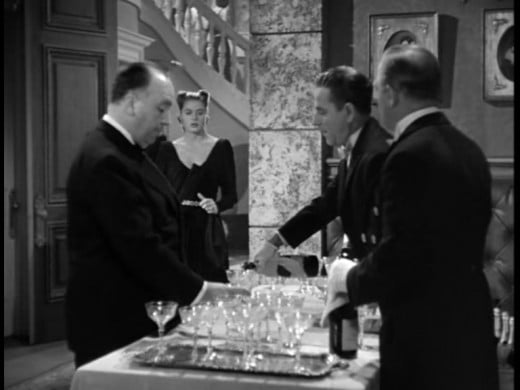
Notorious
- The plot in a sentence: American agent George Devlin (Cary Grant) recruits the daughter of a convicted Nazi spy (Ingrid Bergman) to infiltrate a spy ring in Rio led by Alexander Sebastian (Claude Rains).
- Why it’s a classic: Notorious is both beautifully shot and artfully assembled. It works as a complicated love story, an elaborately-plotted espionage thriller, and a character study, all told more through precise visuals than dialogue. Like Strangers on a Train, the two lead men serve as perfect foils to one another, right down to their physical appearance. Not to mention, Cary Grant and Claude Rains portray these two men; a director couldn’t ask for a better pair of actors. Toss in Ingrid Bergman, one of the most charismatic actors of all-time, and Ben Hecht’s incredibly well-written script, and what is achieved could very well could be the closest thing to film perfection in the history of the medium. Every shot and every word drips with meaning, both literal and figurative. Grant gives one of his most intense performances; Rains one of his most chilling; and Bergman one of her most sympathetic. The story is one morally complex and mature; it an an adult film in the truest sense of the word as Devlin’s jealousy and emotional immaturity almost cost him and Bergman’s Alicia their lives. Hitchcock’s visual mastery takes all of it to the next level. When you watch it, you realize how many times other movies have attempted to rip off nearly every element of Notorious. It should be required viewing for every student of cinema.
- Most Iconic Scene: Hitchcock’s camera glides fluidly over the banister and over a party, then it zooms close into the hand of Alicia where she has hidden a key. Hitchcock gives the viewer a feeling of large scope and contrasting intimacy in a matter of seconds, without camera edits.
- Hitchcock Cameo: He drinks champagne and leaves one of Claude Rains’ parties.
Trailer for Notorious
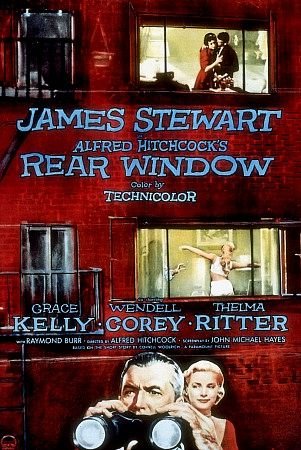
Rear Window
- The plot in a sentence: Journalist/adrenaline junkie J.B. Jefferies has been sidelined due to injury, and while stuck in a wheelchair in his apartment, Jeff spends his time spying on his neighbors when he unexpectedly witnesses a possible murder.
- Why it’s a classic: If you want a tutorial on “showing not telling”, watch the opening scene of Rear Window. Without a single word of dialogue, the audience learns everything it needs to know about the main character’s (L.B. Jefferies played Jimmy Stewart) past and personality. If Rear Window came out this year, it would be hailed by hipsters for being “meta”. For entertainment, the audience voyeuristically watches a movie about Jefferies voyeuristically watching his neighbors for entertainment. The audience watches a movie filmed by a camera, and in the movie, Jefferies watches his neighbors through the lens of his camera. When Jefferies witnesses what he believes to be a murder, he-- and the audience-- are simultaneously horrified and thrilled. When the murderer (played by Raymond Burr, no less) seemingly looks back, he looks back at Jefferies AND the audience. Yikes! Plus, Rear Window has the always wonderful Grace Kelly who plays a character as charming, plucky, and attractive as ever. No wonder Rear Window ranks #48 on AFI’s 100 Greatest Films of All Time.
- Most Iconic Scene: The wife-killing salesman realizes that Grace Kelly’s character is signaling out the window. In a legendary “Oh, crap!” moment, the killer looks directly into the camera as he becomes aware that Jefferies (and the audience) has been watching him. This moment is so good, it gives me goosebumps every time.
- Hitchcock Cameo: Hitch winds a clock in the songwriter’s apartment.
Trailer for Rear Window
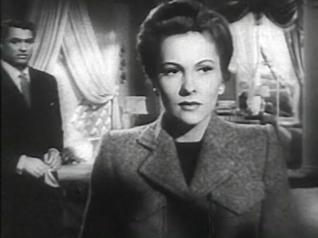
Suspicion
- The plot in a sentence: Lina McLaidlaw seems to be on her way to becoming an old maid until she falls for a playboy Johnny, who-- Lina discovers-- is a schemer and a manipulator and possibly… a killer.
- Why it’s a classic: First of all, what other director would have the cojones to cast classic good guy and natural charmer, Cary Grant, as a homicidal wife killer (or at least as a potential homicidal wife killer)? Unfortunately, the studio heads did not have the same cojones, and they forced Hitchcock to water down his ending to make it seem that Grant is NOT a murderer. Hitchcock wanted Joan Fontaine’s Lina to discover that her husband is, indeed, a killer and allow herself to be die at his hands, proving her love despite Johnny’s homicidal tendencies. This would be called an “envelope pusher” even today. Needless to say, Suspicion gives viewers some of Hitchcock’s earlier forays into the psychological thriller and allowed Cary Grant to broaden his acting chops.
- Most Iconic Scene: Cary Grant brings a tray of potentially poisonous milk, which seems to give an ethereal glow through the shadows, up a staircase to his wife.
- Hitchcock Cameo: Hitch mails a letter at the postbox.
Trailer for Suspicion
Final Thoughts
I recommend two books to expand your appreciation of Alfred Hitchcock and his contribution to film. Truffaut’s famous interview with Hitchcock is required reading for every fan of Hitchcock and every student of film. I also enjoyed the biography, Alfred Hitchcock: A Life in Darkness and Light by Patrick McGilligan which offers a much more objective portrait of Hitchcock than Donald Spoto’s The Dark Side of a Genius: The Life of Alfred Hitchcock.



![Shadow of a Doubt [Blu-ray]](https://m.media-amazon.com/images/I/51Dmn6QYyUL._SL160_.jpg)
![Alfred Hitchcock's Strangers On A Train (BD) [Blu-ray]](https://m.media-amazon.com/images/I/51DOg25f+kL._SL160_.jpg)
![Psycho (1960) [Blu-ray]](https://m.media-amazon.com/images/I/41vCoOobnPL._SL160_.jpg)
![The Birds [Blu-ray]](https://m.media-amazon.com/images/I/51vx2DZQu8L._SL160_.jpg)
![Foreign Correspondent [Blu-ray]](https://m.media-amazon.com/images/I/61iskwJF9JL._SL160_.jpg)

![Rear Window [DVD]](https://m.media-amazon.com/images/I/51AvTZeoqQL._SL160_.jpg)

